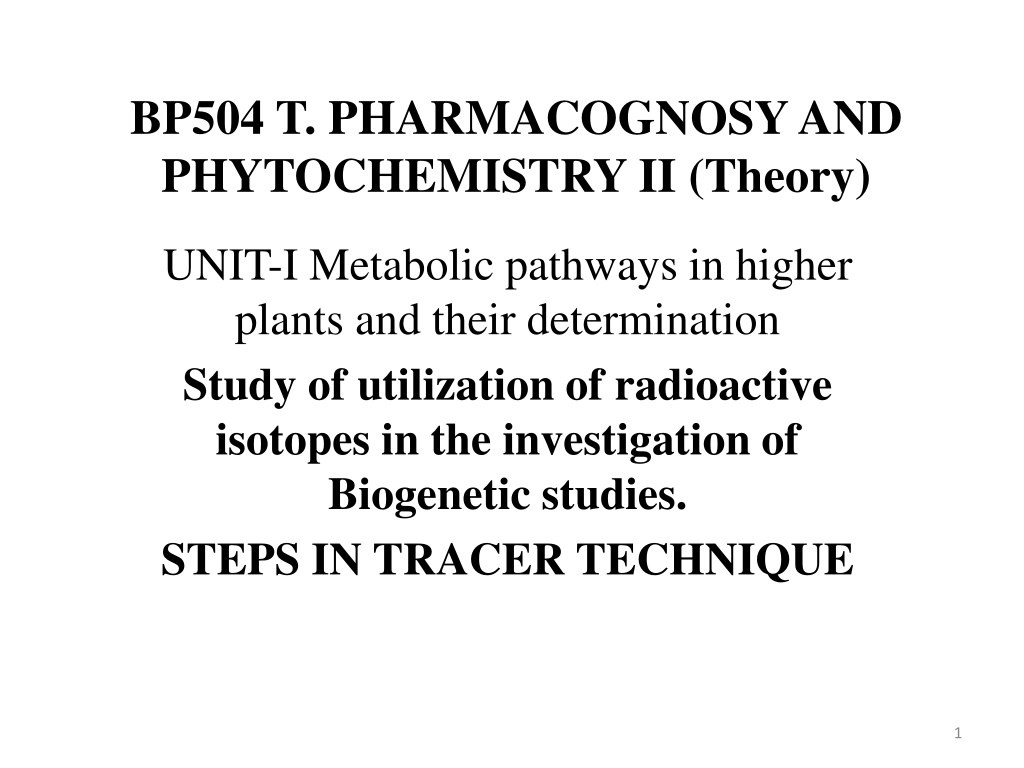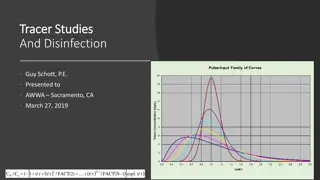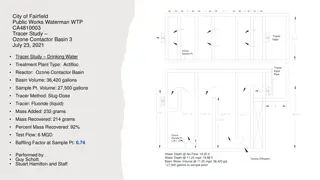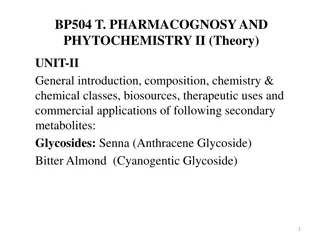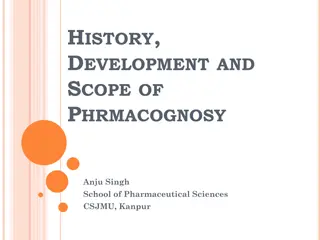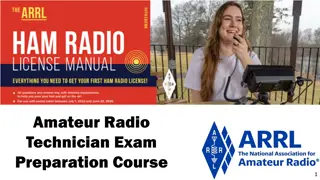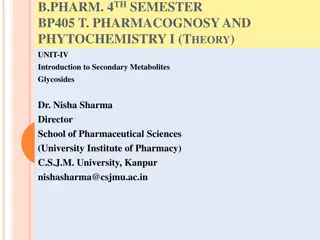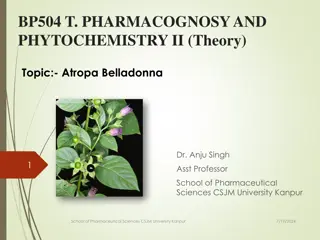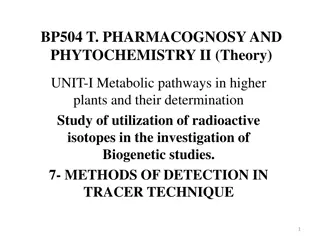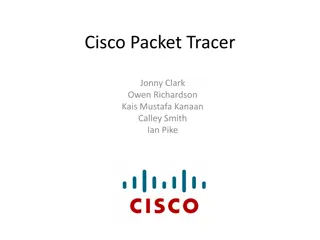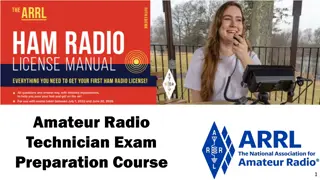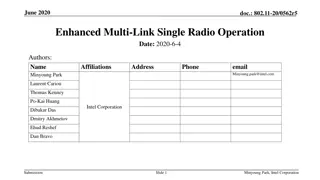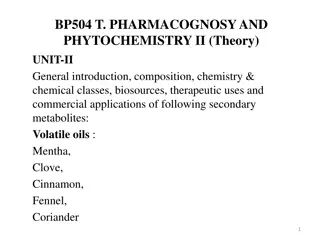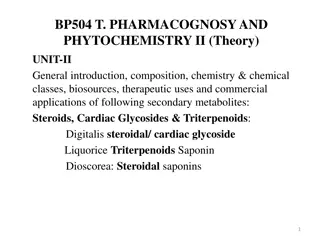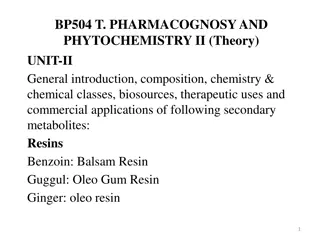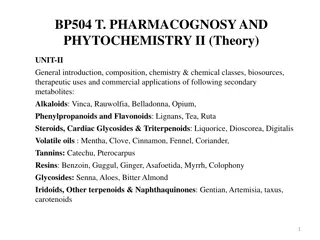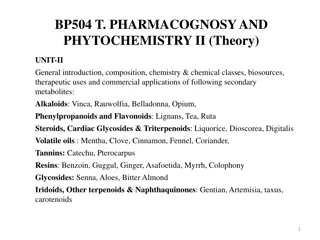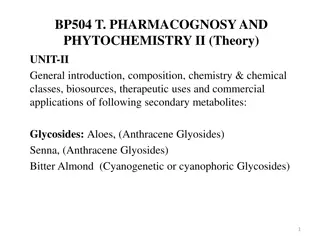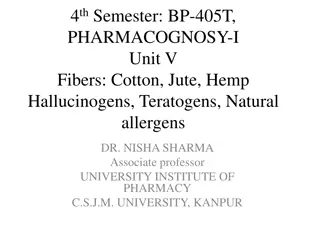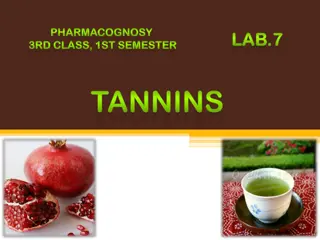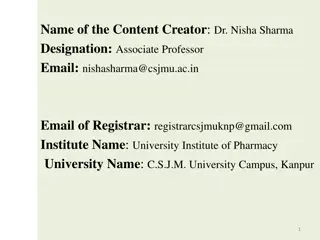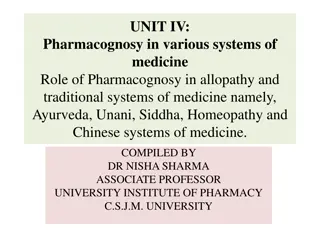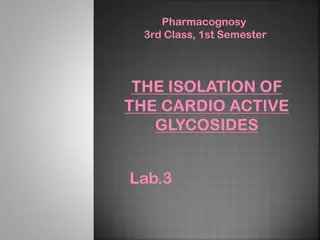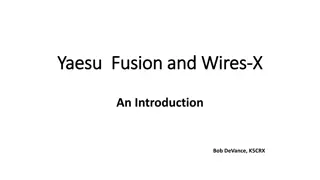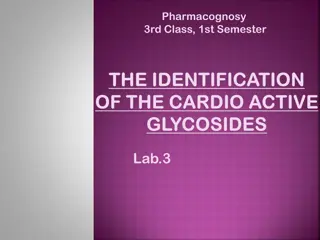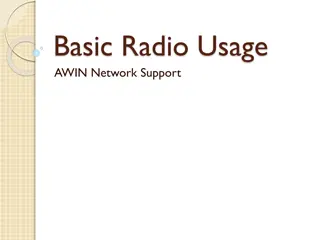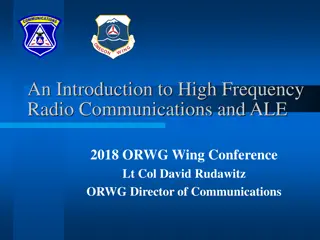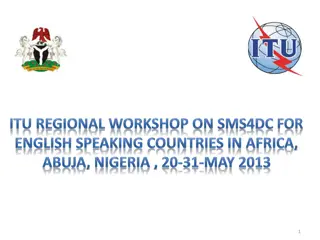Exploring Radio Tracer Techniques in Pharmacognosy and Phytochemistry II
In this unit, the focus is on metabolic pathways in higher plants and leveraging radioactive isotopes for biogenetic studies. Topics covered include steps in tracer techniques, selection of radioisotopes, preparation of labeled compounds, and insertion of radio-labeled metabolites in plant parts using methods like root feeding and stem feeding. These techniques play a crucial role in understanding various biological processes in plants at a molecular level.
Download Presentation

Please find below an Image/Link to download the presentation.
The content on the website is provided AS IS for your information and personal use only. It may not be sold, licensed, or shared on other websites without obtaining consent from the author. Download presentation by click this link. If you encounter any issues during the download, it is possible that the publisher has removed the file from their server.
E N D
Presentation Transcript
BP504 T. PHARMACOGNOSY AND PHYTOCHEMISTRY II (Theory) UNIT-I Metabolic pathways in higher plants and their determination Study of utilization of radioactive isotopes in the investigation of Biogenetic studies. STEPS IN TRACER TECHNIQUE 1
Various Techniques Tracer techniques investigation Use of Isolated organs or Tissues Grafting method Use of mutant strains Enzymatic studies 2
Steps in Radio tracer technique 1. Selection of radioisotopes Criteria for selection of trace element: The starting concentration of trace element must be sufficient enough to withstand dilution in the course of metabolism For proper labeling the physical and chemical nature of the compound must be known. Half life of the tracer isotope should be sufficiently long. The labeled compound should not damage the Tissue system 3
Steps in Radio tracer technique 2. Preparation of Labelled compounds: i. Many compunds are prepared easily from natural sources Ex. Growing chlorello (algae) in atmosphere of 14CO2 all C compounds of organism gets labelled as 14C ii. Nuclear reactor/accelerator: 147N + 10n 146C + 11P iii. 3H labeled compounds are available commercially. Tritium gas 31H labeling effected by catalytic exchange, (Pt cat) in aq. by halogenation of unsaturated compd. with tritium gas. Tritium is pure emitter of low intensity & its radiation energy is lower than CO2 iv. By Use of organic synthesis: CH3MgBr +14CO2 CH3COOH MgBr +H2O (Grignard reagent) CH314COOH + Mg(OH)Br 4
Steps in Radio tracer technique 3. Insertion of radio-labeled compound (metabolite) in biological system i.e. plant part a) Specific site and b) correct time Methods: i. Root feeding: Most common method. Selection of the plant part depends upon the site of biosynthesis of desired metabolites. Root biosynthesis - Tobacco alkaloids done when root is biosynthetic site ex. Datura & tobacco alkaloids, plants are cultivated hydroponically to avoid microbial contamination. 5
Steps in Radio tracer technique ii. Stem feeding: cut end of stem immersed in water, nutrient & labelled compound. For latex plants not suitable iii. Direct injection: where hollow stem is there: umbelliferous, capsular fruits- opium iv. Infiltration or wick feeding: To carry out feeding on plants rooted in soil/other support without disturbance to roots wick feeding is possible. In this method cotton strands are passed through the plant stem. The terminal ends of these cotton strands are immersed in the reagent labeled with radioisotope. 6
Steps in Radio tracer technique v. Floating method: when small amount of material is available leaf discs, chopped pieces added in substrate solution. This technique is also used in conjugation with vacuum infiltration to remove gases vi. Spray technique: This method is used for those reagents which are readily absorbed from the leaf surface. E.g. Steroids. The plant is exposed to the organic compound labeled with the radioisotope for a short period of time using one of the above techniques. The biosynthesis occurs sequentially and at each step radioactive products are formed. These products are isolated and identified. 7
Steps in Radio tracer technique 4. Separation & determination of labeled compound in various biochemical fraction Depending on the nature of drug and its source different method of separation is employed. Soft and fresh tissue: Infusion, maceration Hard tissue: Decoction and Hot percolation Unorganized drug: Maceration with adjustment Choice of solvent : Fat and oil: non polar solvent Alkaloid, Glycoside, Flavonoid: slightly polar solvent Plant phenol: Polar solvent Fractional crystallization, Partition, column chromatography also used as separation technique. 8
Steps in Radio tracer technique 5. DETERMINATION OF NATURE OF METABOLITES: Depending on nature of isotopes various instrumentation techniques is used for determination of chemical nature of intermediate and final product. For radioactive isotopes GM-counter- all type of radiations- , , and Scintillation or liquid scintillation counter- emitting radioisotopes Autoradiography: to trace location of radioisotopes Gas-Ionization chamber All these instruments characterize the nature of radiation, depends upon the conversion of kinetic energy of particle into fleeting pulse of light as a result of its penetration into a suitable luminescent medium. For stable isotopes: Mass spectroscopy- gives molecular peaks depending on mass/charge ratio. NMR- gives nature of carbon and proton. 9
